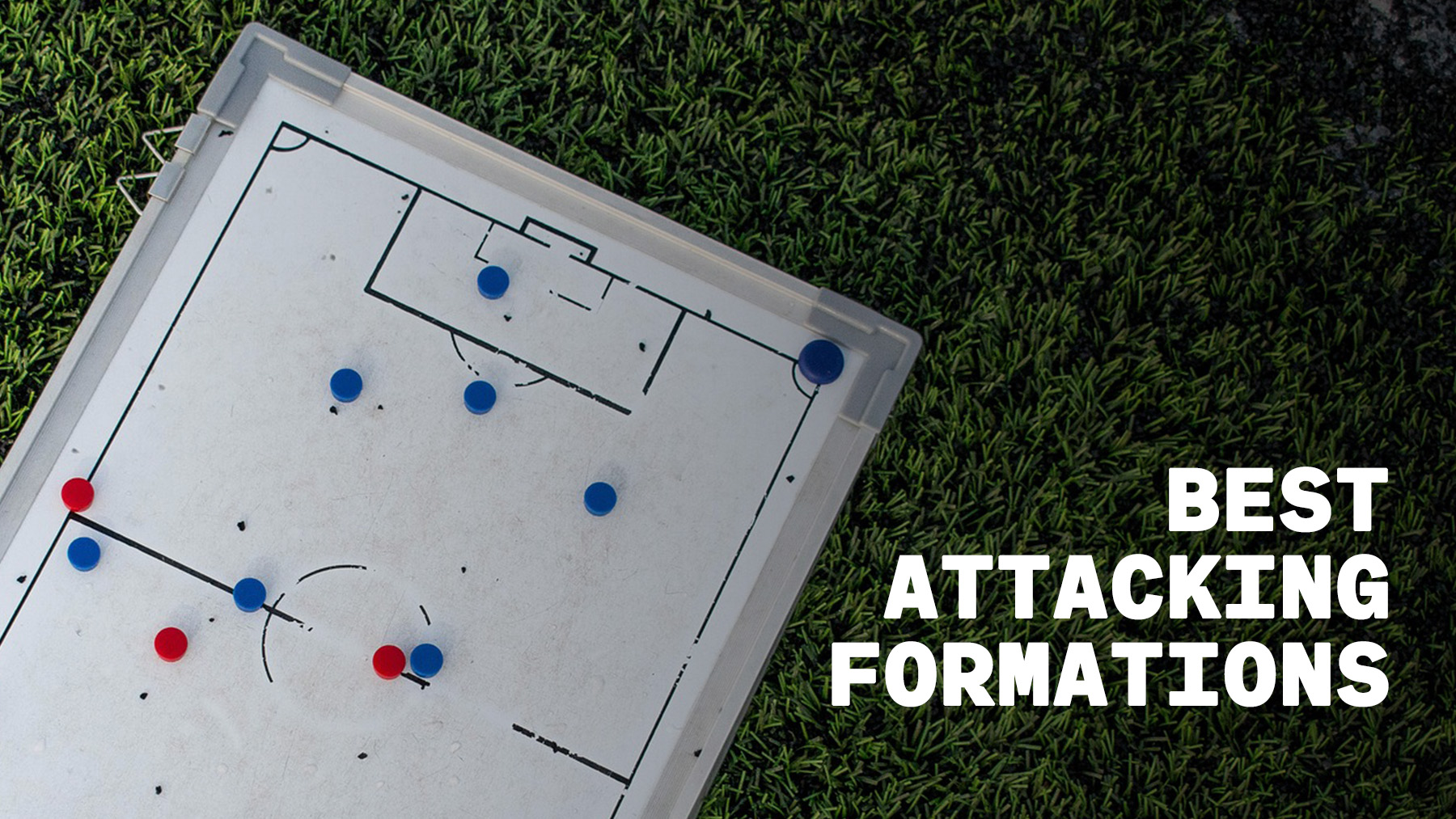
An attacking formation refers to the strategic arrangement of players on the field and tactics with the primary objective of creating goal-scoring opportunities and dominating offensive play. This configuration regulates the positioning of players in various positions and roles in order to maximise the attacking powers of the team. Teams use various attacking formations depending on their playing style, strengths, and the tactical approach they want to take throughout a match.
The number of forwards, midfielders, and defenders, as well as their precise responsibilities and places, are important components of an attacking structure. The formation is frequently stated numerically, such as 4-2-3-1 or 3-4-3, with each number representing the number of players in the defensive, midfield, and attacking lines.
Teams may choose attacking formations based on factors such as the opponent’s weaknesses, the strengths of their own players, and the overall strategy devised by the coach. The aim is to create a structure that facilitates fluid ball movement, player collaboration, and the ability to break down the opposing defense, leading to goal-scoring opportunities in a game.
Here are some most effective offensive formations in football commonly used by successful team and can be effective in certain situations:
4-4-2
The 4-4-2 formation emphasises a two-pronged offensive force and a strong midfield presence for a more traditional approach to attacking play. It has a four-defender backline, a midfield quartet with two central midfielders and two wingers, and two central strikers. With two strikers in the box, this formation provides a strong defensive foundation as well as a direct offensive threat. Midfielders are vital in providing assistance, creating chances, and connecting the defence with the offence.
4-3-3
The 4-3-3 formation has been one of the most persistent and efficient attacking formations in football for decades. Its longevity is due to its versatility, balance, and ability to create offensive opportunities both centrally and on the sides. A classic 4-3-3 formation includes four defenders on the backline, three midfielders (a defensive midfielder, a central midfielder, and an offensive midfielder), and two wingers and a central striker up front. This configuration provides a strong defensive foundation while allowing for a fluid and dynamic offensive approach.
4-2-3-1
The 4-2-3-1 formation which is know for its control and creativity, offers a more control-oriented approach to attacking play, emphasizing possession and midfield dominance. It features a backline of four defenders, a defensive midfield duo, an attacking midfielder, and a lone striker supported by two wingers. This formation excels in retaining possession, creating triangles in midfield, and breaking down defensive lines with patient passing and movement. The offensive midfielder is vital in connecting the midfield to the attack, offering creativity, and creating opportunities for the attackers.
4-2-2-2
Because of its balanced structure and offensive prowess, the 4-2-2-2 system is regarded as one of the best attacking formations in football. This formation offers a harmonious balance of defensive solidity and offensive fluidity, with twin centre midfielders providing a sturdy core and supporting both defensive and playmaking roles, and wide midfielders enhancing attacking plays. The presence of two strikers encourages a strong strike partnership, allowing for rapid combinations and nuanced interplay in the attacking third. The 4-2-2-2 formation is a popular alternative for teams looking for a strong attacking presence while preserving defensive organisation.
3-4-3
The 3-4-3 formation prioritizes width and attacking overload on the flanks. Three centre defenders, two wingbacks, two central midfielders, and a front three with a central striker and two wingers make up the lineup. The goal of this formation is to stretch the opposition’s defence, allowing for penetration and crossing opportunities. Wingbacks play an important role in both defensive and offensive support, while central midfielders create balance and connect play between the backline and attack.
3-5-1-1
The 3-5-1-1 formation is recognized as an effective attacking setup due to its strategic balance and adaptability. With three center-backs providing a solid defensive foundation, the five-man midfield offers width, control, and the ability to dominate possession. The attacking midfielder in the “1” position operates just behind the primary striker, creating a focal point for creative play and link-up with the midfield. This formation excels in maintaining possession, controlling the tempo of the game, and breaking down opposition defenses with a combination of wide play and a dynamic central presence. The emphasis on numerical advantage in midfield and a lone striker assisted by creative playmakers makes the 3-5-1-1 a viable option for teams trying to impose attacking dominance while retaining defensive solidity.
I need more explain how can winning opponent team during in time if l win how to maintain the remaining time during match as par as coach consign